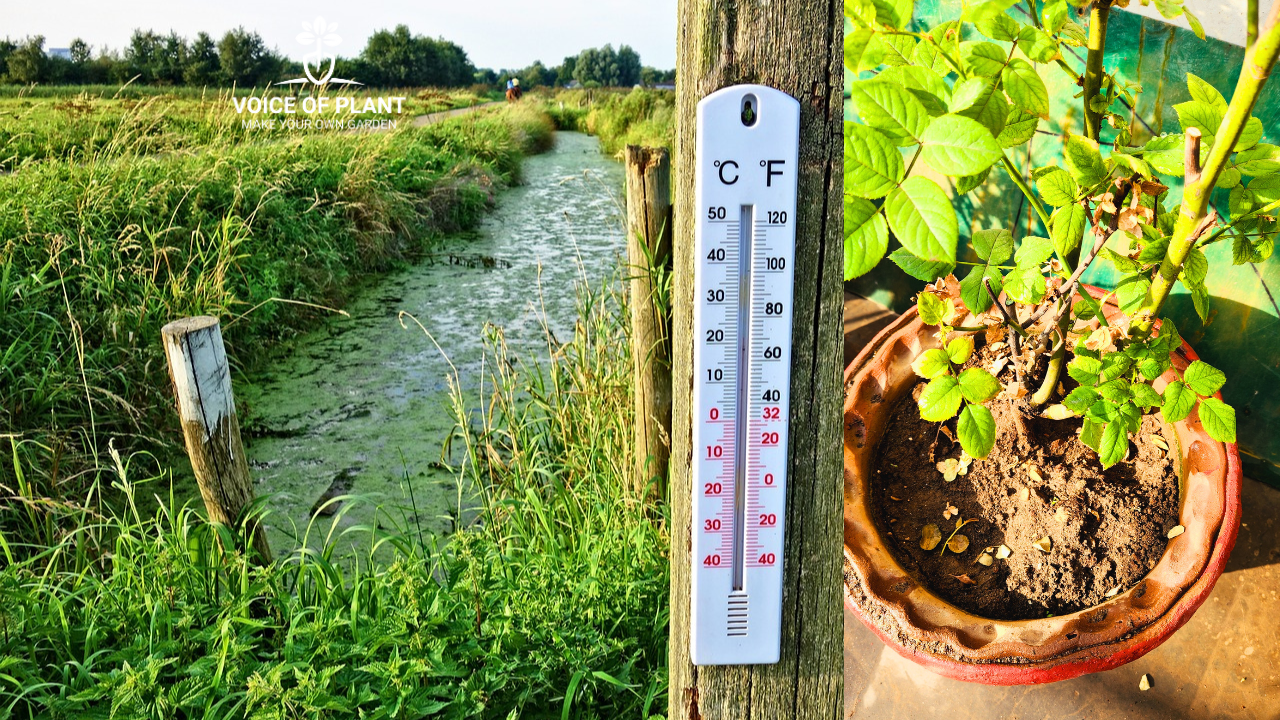How to Care Plants in Summer
Plants, like all living beings, need appropriate care to survive the scorching weather. Generally, plants rooted in the ground handle heat better than those in containers, which can suffer significantly when temperatures rise above their comfort zone of 15-35℃, often reaching 41 – 43℃ or higher.
The health of plants can suffer significantly in extreme heat. They often dry up, their leaves turn yellow, the soil becomes parched, and the leaves can get scorched, leading to overall plant burn.
How to Care Plants in Summer
Many gardeners struggle to save their plants because they lack the knowledge to properly care for them during intense heat. Some people fail to water correctly, while others apply too much fertilizer. Here are some common tips to help gardeners protect their plants in extreme heat:
1. Positioning of the Plant
2. Covering the Plants
3. Watering During Summers
4. Avoid Pruning in Summer
5. Avoid Repotting
6. Avoid giving heavy fertilizer
7. Water Spray
8. Soil Care
9. Mulching
10. Prevent Pest Attack
11. Avoid Growing New Plants
12. Monitoring plants
12 Tips To Care Plants in Summer
Check essential care tips for plants in summer to ensure they thrive in the scorching heat.
1. Positioning of the Plant
Morning sunlight from 7 am – 10:30 am benefits plants, while the midday sun from 11 am-4 pm can be harsh.
(i) Move summer plants like Hibiscus, Tulsi (Holy basil), Shami, Aprajita (Clitoria), Night Jasmine (Parijat), Curry leaf plant, etc. to areas with morning sun.
(ii) Place winter plants like Rose, Marigold, Calendula, Chrysanthemum, etc. under green shades to catch evening light, and bring delicate plants indoors.
- Arrange plants near walls, balconies, or corners to shield them from the harsh midday sun.
2. Covering the Plants
Use a green net to cover balconies, terraces, or garden areas, which can be found at hardware stores.
- If unavailable, use cloth, sarees, or dhoti-type fabrics as alternatives. These coverings not only protect plants but also help maintain home temperatures by blocking direct sunlight.
3. Watering During Summers
Regular watering is crucial during extreme summer.
(i) Early Morning or Late Evening:
Water your plants early in the morning or late in the evening to minimize evaporation and allow the plants to absorb moisture.
(ii) Deep Watering:
Water deeply and infrequently to encourage deep root growth. Shallow watering can lead to shallow roots, making plants more vulnerable to heat.
Avoid Midday Watering:
Avoid watering during the hottest part of the day, as most water will evaporate before reaching the roots.
4. Avoid Pruning in Summer
Avoid unnecessary cutting, shaping, and pruning, which can lead to fungal infections.
Only cut to remove pests or yellow leaves, and deadhead flowers as needed.
Avoid planting cuttings, as they require humidity and favorable conditions not present in summer.
5. Avoid Repotting
Do not repot your plants in the middle of summer, especially during the hottest part of the day. It can stress them out.
Repotting in extreme heat can cause significant stress to the plants, making them more vulnerable to wilting and damage.
- If repotting is necessary, try to do it during cooler parts of the day during late evening, to minimize the stress on your plants.
6. Avoid giving heavy Fertilizer
High temperature slow downs plant chemical reactions, so avoid heavy fertilizers like chemical urea, NPK, DAP, mustard cake, and groundnut cake.
Use diluted liquid fertilizers like cow dung liquid fertilizer, vermicompost tea, banana peel liquid fertilizer, seaweed liquid fertilizer, kitchen compost tea, and onion peel liquid fertilizer once in a month.
7. Water Spray
Spray water on plants in the morning or evening to avoid the intense midday sun. This helps remove dust, cool the leaves, and increase humidity.
- Regular spraying also allows for monitoring plant health and identifying diseases. Aim to spray plants daily in summer, or at least once or twice a week.
8. Soil Care
(i) Well-Draining Soil:
Ensure your soil is well-draining to prevent waterlogging, which can be as harmful as drought.
(ii) Organic Matter:
Add organic matter such as compost to improve soil structure and water-holding capacity.
9. Mulching
Apply a layer of mulch around the base of your plants to help retain moisture, regulate soil temperature, and reduce weed growth.
10. Preventing Pest Attacks
Summer can increase pest vulnerability. Use neem leaf solutions to spray plants, and for severe infestations, use organic plant protectors made from natural ingredients.
Regular applications can prevent and treat pests like aphids, mealybugs, and mites.
11. Avoid Growing New Plants in Summer
Avoid planting new seeds or buying new plants from nurseries during the peak heat of 40°C.
Seeds require milder weather for germination, and new plants may not thrive.
- Wait until the rainy season to repot existing plants.
12. Regular Monitoring Maintaining Plant Health
With proper care and attention, plants can thrive even in the scorching summer heat.
Regular watering, careful positioning, and protective measures can ensure your plants remain healthy and vibrant throughout the season.
Follow our Social media channel:
1. Voice of Plant – YouTube Channel
